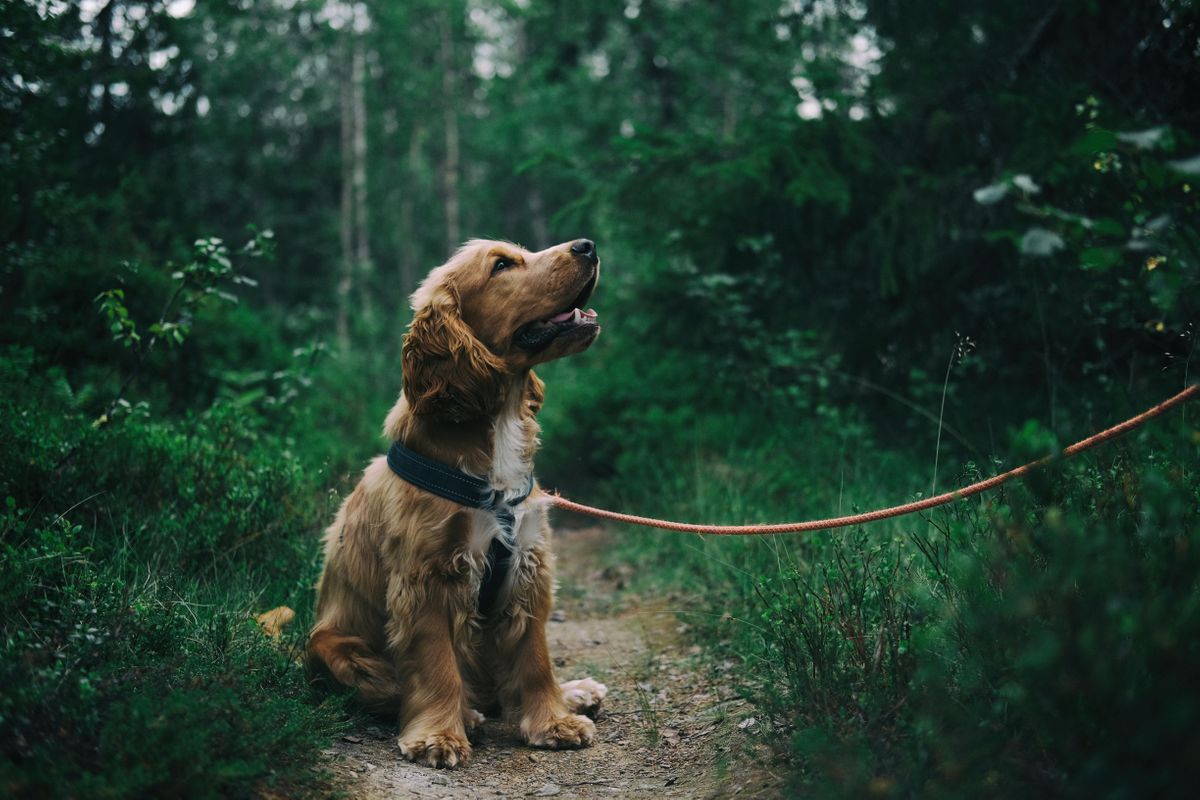Taking your dog for a walk should be an enjoyable experience for both of you. However, for many dog owners, it turns into a battle of wills when their dog pulls, lags behind, or darts in every direction. If this sounds familiar, then loose leash walking is the perfect skill to focus on. Training your dog to walk calmly by your side can make a world of difference, transforming your walks from frustrating to fun.
In this guide, I’ll “walk” you through the process of teaching your dog to walk on a loose leash using positive reinforcement, consistency, and clear communication. By the end, you and your pup will be well on your way to having more enjoyable strolls together!
What is Loose Leash Walking?
Loose leash walking means your dog walks beside you (or slightly ahead) with a relaxed leash that forms a soft “J” shape, rather than being taut or pulled tight. The goal is to have your dog move at a comfortable pace without pulling, lunging, or lagging behind. It’s different from “heel” (where your dog must walk directly beside you and stop when you stop), making it ideal for casual walks and giving your dog the freedom to explore within reasonable boundaries.
Why Does Loose Leash Walking Matter?
Loose leash walking is about more than just good manners—it’s about safety, communication, and bonding. Here are a few key benefits:
- Prevents Injuries: A dog that pulls can hurt themselves (or you) by putting strain on the neck, shoulders, and spine.
- Reduces Frustration: It makes walking more enjoyable, allowing you to relax instead of constantly correcting or being pulled along.
- Improves Your Dog’s Focus: A dog that isn’t distracted by pulling is more attentive and responsive to your commands.
- Builds Positive Associations: Walking calmly means your dog is less likely to react negatively to other dogs, people, or new environments.
Now, let’s explore how to get started!
Getting Ready: Tools for Success
Before beginning loose leash training, make sure you have the right equipment:
- Leash: Use a standard 4-6 foot leash, as it offers the best balance between freedom and control. Avoid retractable leashes for training, as they create tension and confusion.
- Harness or Collar: Choose a well-fitted harness (preferably a no-pull with a front-clip) or collar. A front-clip harness helps discourage pulling by redirecting your dog back toward you if they pull.
- Treats: High-value treats are essential for reinforcing positive behaviors. Pick something soft and easy to break into small pieces.
- Patience: Leash training takes time and consistency, so start each session with patience and positivity.
Step-by-Step Training Plan for Loose Leash Walking
1. Start in a Low-Distraction Environment
Begin indoors or in your backyard where there are few distractions. This helps your dog learn to focus on you before adding the excitement of the outdoors.
- Attach the leash and allow your dog to explore. Avoid tugging or pulling.
- When your dog looks at you or stands calmly, say “Yes!” and give a treat.
- Take a few steps forward. If your dog follows with a loose leash, mark the behavior with “Yes!” and reward them again.
Repeat this exercise, taking short, controlled walks indoors until your dog is consistently paying attention and walking with you on a loose leash.
2. Use the “Heel!” Cue to Start Walking
A verbal cue helps signal to your dog when you want to begin walking. Here’s how to introduce it:
- Stand still and say “Heel!” in a cheerful tone.
- Take a step forward and encourage your dog to follow.
- If your dog follows with a loose leash, immediately say “Yes!” and reward them.
- If they start pulling or lag behind, stop and wait for them to come back to you.
By using a consistent cue, your dog will learn that “Heel!” means it’s time to start walking calmly.
3. Reward for Walking Beside You
During walks, the goal is to reinforce your dog for staying near you on a loose leash. Here’s how to set them up for success:
- Reward frequently at first: Use treats to reward your dog whenever they are walking beside you or with a loose leash.
- Vary the rewards: Once your dog is getting the hang of it, start varying when you reward—sometimes every few steps, other times after a longer stretch. This keeps your dog engaged and attentive.
- Use praise and petting: Not all rewards have to be treats. Praise, petting, and a happy “Good job!” can also be motivating for many dogs.
4. Handle Pulling: Stop and Wait
If your dog begins to pull, resist the urge to pull back. Instead, follow these steps:
- Stop walking immediately. Stand still and do not move forward.
- Wait for your dog to turn back to you or release the tension on the leash.
- Once the leash is loose again, say “Yes!” and reward your dog, then start walking in the opposite direction.
This teaches your dog that pulling causes the walk to stop, while keeping a loose leash allows the walk to continue.
5. Use the "Turn and Go" Technique
If your dog pulls consistently or becomes fixated on something, try changing direction:
- Say “This way!” or use a light tap on the leash to get your dog’s attention.
- Turn around and walk in the opposite direction, encouraging your dog to follow.
- As soon as your dog catches up and the leash is loose, mark and reward.
This exercise keeps your dog focused on you and prevents them from fixating on pulling toward distractions.
6. Gradually Increase Distractions
Once your dog is consistently walking on a loose leash in low-distraction areas, start practicing in new settings, like quiet streets or parks. Keep the initial sessions short and positive, rewarding frequently to help your dog stay focused.
As your dog becomes more proficient, increase the challenge by walking in busier environments. Remember to be patient and continue rewarding good behavior.
Troubleshooting Common Issues
- Pulling to Sniff or Explore: Dogs love to sniff, so incorporate “sniff breaks” into your walk. Use a cue like “Go sniff!” and allow your dog to explore for a moment before resuming loose leash walking.
- Excessive Pulling: If your dog is very strong or pulls excessively, consider using a front-clip harness to reduce pulling pressure. Combine this with consistent training and reinforcement.
- Lack of Focus: If your dog is easily distracted, practice focus exercises like “Look at me!” or “Touch” (where your dog touches their nose to your hand) to regain their attention.
Final Thoughts
Teaching loose leash walking is a journey that takes time and patience, but the rewards are worth it. A dog that walks calmly beside you is safer, more attentive, and allows you to enjoy your outings together. By starting in low-distraction environments, using positive reinforcement, and gradually building up to more challenging scenarios, you’ll set your dog up for success.
If you need help with leash training or want to address more specific walking issues, feel free to reach out to Undercover Alpha K9 Services for personalized guidance and support!
Happy walking! 🐾

